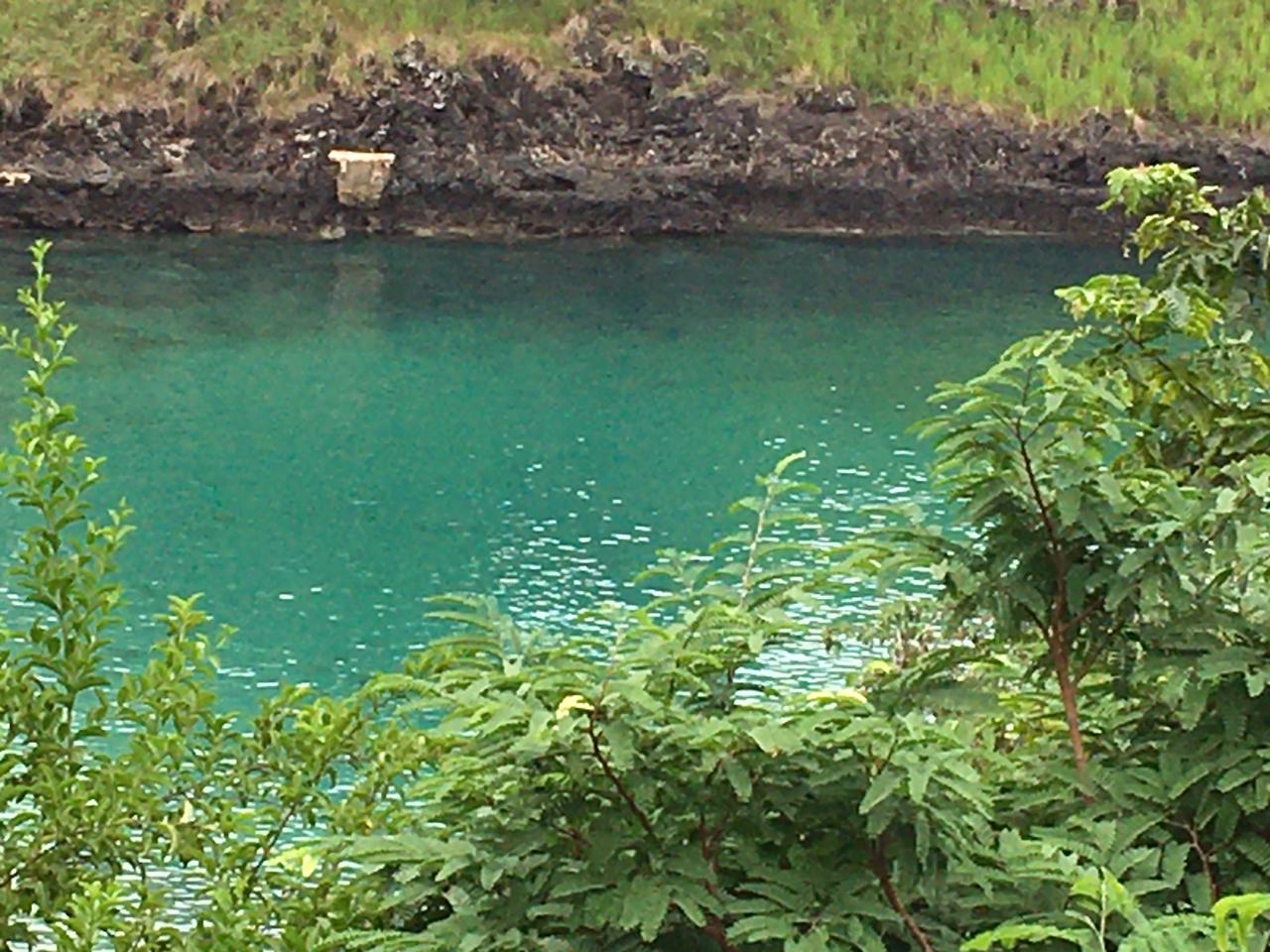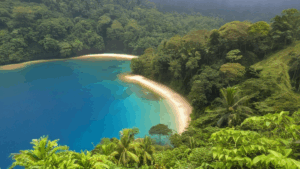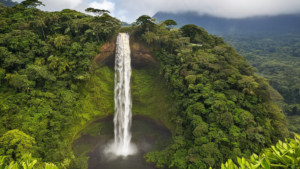Tourism in Sao Tome and Príncipe, the island of Sao Tome was discovered on the 21st of December, which is Saint Tome day and Príncipe in 17st of Januar, by the Portuguese João de Santarém e Pêro Escobar.
Tourism in Sao Tome and Principe with sugar cane cycle.
SUGAR CANE CYCLE
Tourism in Sao Tome and Principe with sugar cane, When the Portuguese settlement on the island of Sao Tome and Principe began in the 16th Century, the sugar cane was introduced from another part of the Portuguese Empire, the Azores. As sugar cane is a labour intensive crop, the Portuguese brought in slaves from the African Coast from countries like Benin, Congo, Angola and Ningeria. The need for communication the slaves in between as well as with the Portuguese administration gave origin to the 3 existing Creole languages of Sao Tome and Principe.
Due to the islands of Sao Tome and Principe strategic position in the Gulf of Guinea, between the African and the American Continent as well as on the way from European Continent to the Eastern, Sao Tome and Principe also played an important role for Centuries as a maritime trading post. The travellers depended on the island of Sao Tome to recharge their vessels with fresh water and other Basic. Apart from trading goods, the island also traded slaves, sending off African slaves to the American and Europian.
BANANAS
Propagation: propagation of bananas is done with rhizomes called suckers or pups. Very small pups are called buttons. Large suckers are the preferred planting material. These are removed from vigorous clumps with a spade when at least three feet tall, during warm months. Pups should not be taken unttil a clump has at least three to four large plants to anchor it. When the pup is taken the cut must be into the mother plant enough to obtain some roots. Plant close to the surface. Large leaves are cut off of the pup leaving only the youngest leaves or no leaves at all. Some nurseries supply banana plants as container grown suckers.
Fruit harvest: Stalks of bananas are usually formed in the late summer and then winter over. In March they begin plumpimg up and may ripen in April. Occasionally, a stalk will form in early summer and ripen before cold weather appears. The fruit can be harvested by cutting the stalk when the bananas are plump but green. For tree-ripened fruit, cut one and at a time as it ripens. If latter is done, check stalk daily as rodents can eat the insides of every banana, from above, and the stalk will look untouched. One harvested the stalk should be hung in a cool, shady place. Since ethylene helps initiare and stimulate ripening, and mature fruit gives off this gas in smal amounts, ripening can be hastened by covering the bunch with a plastic bag. Plantains are starchy types that are cooked before eating.
CULTIVARS
The antiquity of the banana and its tendency to produce mutations or sports have resulted in an extensive number of cultivars. Only the common ones growing in California are listed.
Tourism in Sao Tome and Principe with banana.
APPLE, SILK, OR MANZANA
Dessert type, pleasant sub-acid apple favor when fully ripe. Fruit: 4 to 6 inches, Grows to 10 to 12 feet. The fruit is not ripe until some brownish specs appear on the skin. From planting unttil harvest is approximately 15 months.
CAVENDISH
Resistant to Panamá Wilt disease. Clones of this variety are distinguished by the size of the pseudostem. The largest is Lacatan (12 to 18 feet) followed by Robusta and Giant Cavendish (10 to 16 feet). The smallest is the Dwart Cavendish (4 to 7 feet).
APPLE, SILk, OR MANZANA
Dessert type, pleasant sub-acid Apple flavor when fully ripe. Fruit: 4 to 6 inches. Grows to 10 to 12 feet. The fruit is not ripe until some brownish specs appear on the skin. From planting unttil harvest is approximately 15 months.
CAVENDISH
Resistant to Panama wilt disease. Clones of this variety are distinguished by the size of the pseudostem. The largest is Lacatan (12 to 18 feet) followed by Robusta and Giant Cavendish (10 to 16 feet). The smallest is the Dwart Cavendish (4 to 7 feet).
CUBAN RED
Very tall (up to 25 feet), very tropical. Skin dark red, with generally reddish pseudostem. Fruit is especially aromatic with cream-orange pulp. 20 to months from planting unttil harvest.
GROS MICHEL
Commercially, the most important and considered by many to be the most flavorful. Because of its susceptibility to Panama wilt disease it is being replaced with resistant varieties. Although there is no Panamá Wilt in California, it does poorly here as the plant seems to need heat and it tends to grow more slowly than other varieties.
BLUE JAVA OR ICE CREAM
Medium-tall (15 to 20 feet), bluish cast to the unripe fruit. Fruit: 7 to 9 inches, quite aromatic and is Said to melt in the mouth like ice cream. Bunches are smal with seven to nine hands. 18 to 24 months from planting unttil harvest.
LADY FINGER
Tall (20 to 25 feet), excellent-quality fruit, tolerant of cool conditions. 15 to 18 months from planting to harvest.
ORINOCO
Commonly grown in California for years as a landscape plant.Grows to 16 feet, more cold hardy than any other. 15 to 18 months from planting to harvest. Flavor is good, texture is less than perfect, but when properly grown and cultivated it can produce enormous Stalks of fruit. Excellent in banana bread. Sometimes called horse, hog or burro banana, it can be purchased at most nurseries.
POPOULU
A Hawaiian variety with short, salmon-pink flesh, plump fruit that may be cooked or eaten fresh. A slender plant preferring a protected area with high humidity and filtered light. Grows to about 14 feet tall.
VALERY
A Cavendish clone resemblimg the Robusta. Some
Tourism in Sao Tome and Principe with cocoa history, Some believe them to be the same. The dwarf cavendish is the most widely planted as it is better adapted to a cool climate and is less likely to be blow over.
WILIAMS
The same as Giant cavendish. Originated from a mutation of Dwarf Cavendish found in Queensland, Australia. A commercial banana grown in many coutries that does well in California. 10 to 16 feet in height and has a distinctive lomg, very large bud. The Del Monte is a Williams.
COCOA HISTORY
Tourism in Sao Tome and Principe with cocoa history, The cocoa tress was classified in 1720 by the Swedish biologist Carl Von Linné as Rheobroma cocoa, food of the gods in Greek, referring to the legend of its divine origin. Originally found in Central America and the Amazonas, were it grew spontaneously a 4.000 years b.C.
But it was in México where they knew how to take advantage of the fruit, probably since the Toltecas, the Almecas and the Mayas, in an orderly and lrganized way. Cocoa was an important commodity in Pre-Columbian Mesoamerica. Spanish chroniders of the conquest of México by Hernán Cortês relate that when Montezuma II, emperor of the Aztecs, dined he took no other beverage than chocolate, served in a golden goblet and eaten with a golden spoon. Flavoured with vanilla and spices, his chocolate was whipped into a froth that dissolved in the mouth. No less than 50 pitchers of it were prepared for the emperor each day, and 2.000 more for nobles of his court.
CHOCOLATE
Tlurism in Sao Tome and Principe with chocolate, Chlcolate was introduced to Europe by the Spaniards and became a popular beverage by the mid 1500s. They also introduced the cocoa tree into the West Indies and the Philippines. It was used in alchernical processes, where it was known as Black Bean.
Cocoa in Sao Tome and Principe.
It was on the island of Principe that cocoa tree was introduced by José Ferreira Gomes in 1822, of the type amelonado (forastero), coming from Brazil. Or in 1819 by Royal decree, just before the independence of Brasil in 1822, who thought it safer to transplant a few specimens from the region of Bahia to the island of Principe which was then also a part of the Portuguese Kingdom.
On the island of Sao Tome the cocoa tree was introduced by the Baron of Água Izé in 1852, during the last decades of the 19th Century Sao Tome was the world’s second biggest producer of cocoa with an annual production of about 13.500 tons (the biggest producer being Ecuador with and annual production of 27.700 tons). By 1909, Sao Tome produced 30.300 tons of cocoa – the highest production ever – and became the world’s third largest producer of cocoa (after the Gold Coast and Brasil). But soon after followed a boycott of Santhomean cocoa, instigated by the British chocolate company, Cadbury, against the inhuman living conditions of the African contract workers in Sao Tome. The Crisis was aggravated by the Frist world war and cocoa autput continued to decline due to crop diseases, soil erosion, and high production costs.
In 1973, just before independence, the production had risen to 12.000 tons, but after independece, the govemment aligned with a soviet model of socialism that meant that the old plantations that had been controlled by the Portuguese, were distributed between small farmers in cooperative systems.
The production in Sao Tome and Príncipe never picked up the old standards. Today the annual production in the island of Sao Tome and Principe is little more than 5.000 tons a year.
COCOA BOTANIC
The geographic zone which is most adequate for the cultivation of cocoa extends from the tropics cancer and the capricorn (20° south and 20° north of Equator) as it need as constant temperature between 25 and 30 degrees, high humidity and frequent light rainfalls. And only in this small belt around Earth these climatic conditions are found.
Cooa should be grown in soils rich in humus, protected by shade trees called cocoa mummies.
Cocoa pertains to the family of esterculiaceas, characterized by a central deep root and the flowers and fruits broot directly from the principal trunk. There are 2 basic varieties of cocoa trees, the criollo and the forastero, of which hybrids where made like the trinitário (originating from the island of Trindad).
The most common type of cocoa in Sao Tome and Principe is the melaço. It differs from the rest by having big grains and by being much flavoured. There are also hybrids, which in general have bigger grains in smaller quantity, and a very sweer flesh. All these types of cocoa can be grown in whatever altitude.
The trunk is straight grey-purplish. The flowers that grow straight on the trunk are rosy white and hermaphrodites, repeating the number 5 in its structure, 5 sepals, 5 petals, 5 sterile stamens, 5 fertile stamens, and the part of the pistil where the ovules are contained has 5 fruit divisions, crowned by pollen receiving parts of the pistil waiting for the interaction of an insect to be fecundates. An ant, a mosquito or another tropical animal Will do and 5 months after the fruit is ripe to be collected. Of the thousands of flowers that each tree produces, only a small percentage will be pollinated and only an even smaller percentage will finally produce fruit.
The cocoa pod has a rough leathery melon shaped rind from between 15 and 20 cm long and a colour that varies between pastel green while it is still ripening and orange or purple when it is ripe. Each ripe pod weighs about 300 – 500 g.
COCOA CULTIVATION
Tourism in Sao Tome and Principe with cocoa cultivation, The classic method of production since colonial times was to plant the cocoa trees sufficiently close one to another so that the branches would interlace and create a sort of a vegetal tissue at a level underneath which one could pass confortably and recollect the cocoa.
In addition, this ‘tissue’ delayed the growth of bushes and herbs in the plantation area, so limited also the working force that needed to clean around the cocoa trees.
COCOA TREATMENT
Tourism in Sao Tome and Principe with the cocoa treatment, After collection, the cocoa pod is broken and the about 40 cocoa beans are involved ir a sweet white Pulp (called ‘baba de cacau/ goma de cacau ‘ literally cocoa drewl in South America).
It os essential during the breaking of cocoa pod, that the beans are not broken, as one single ‘hurt’ bean may change the whole process of fermentation afterwards.
CALIBRATION
Tourism in Sao Tome and Principe with cocoa calibrating, The cocoa beans are about 2-3 cm long and 1-2 cm broad and remind of an fermented.
FERMENTATION
Tourism in Sao Tome and Principe with cocoa fermentation, the fermentation is the most crucial process. It is usually made in small lots of beans joined by the same size and quality to ensure an even fermentation.
After breaking the cocoa pod, the interior, both grains and flesh is left to ferment for about 7 days.
During the first 24 hours, it is important to keep the recipient for fermentation well closed, as loss of humidity will stop the process of fermentation.
Afterwards, it is important to move the fermenting mass, which is usually done in Open wooden boxes, in order to prevent the mass from solidification as well as providing an even fermentation of the mass. If the cocoa is not moved, instead of the characteristic brown, the cocoa Will turn wither black (of too much fermentation) or white (of too little fermentation).
Tourism in Sao Tome and Principe, during this time, the seeds and Pulp undergo “sweating”, where the thick pulp turns liquid as it ferments. The fermented pulp trickles away, leaving the cocoa seeds behind to be collected. Sweating is important for the quality of beans, which originally have a strong bitter taste. If the sweating is overdone, the resulting cocoa may be ruined; if underdone the cocoa seed maintains a flavour similar to raw potatoes and becomes susceptible to mildew.
During the process of fermentation, the white carbonate rich flesh is an important booster of the process. It is during this process the beans turn dark brown from white-greyish.
Tourism in São Tomé and Príncipe with drying cocoa, thereafter, the cocoa is dried. The time of drying is between 40 and 72 hours, under a constant 7,5% of relative humidity.
Tourism in São Tomé and Príncipe with cocoa calibration, when the cocoa is dry, it is calibrated according to the size of the grains and it is then ready for exportation.
Tourism in São Tomé and Principe with conservation.
The relative humidity of São Tomé and Príncipe is about 90 %. If the dry cocoa is not exported immediately, ir may be kept for about 2 a 3 years, if an appropriate humidity is kept of maximum 7,5%, as well as avoiding insects. This was done in the old days in a sort of green houses in which ovens were lit under the cocoa.
Today it is rare that the cocoa waits for exportation and this practice has been abandoned.
Tourism in São Tomé and Príncipe with Exportation.
As for São Tomé and Príncipe, the treatment process ends here. The dried and calibrated cocoa beans are exported and are roasted, peeled, cleaned and centrifuged abroad. Therefore, chocolate, few Santomeans have ever tasted, as the separation of the cocoa butter from the cocoa mass requires a know how that doesn’t exist here. The sweet white cocoa flesh around the cocoa beans is usually eaten fresh. Mars bars and Snickers are imported to about 200 times the price of the fresh cocoa beans and are too expensive for the people to buy.
The process that are known in São Tomé and Príncipe entail what is needed to send the cocoa beans to Europe, that is the collecting of the ripe cocoa pods, cutting them open and separating the cocoa beans. Many collectors do not take part in the rest of the process. They plainly sell the cocoa beans, swimming in white flesh, in buckets along the roadside. The bigger plantation owners and/or businessmen (among these one called Saotocao), and Olson coperateve ( CAB), then send big trucks down the coast to buy the cocoa beans and bring them to the fermentation and drying centres from where the characteristc heavy bittere sweet of fermented cocoa emerges.
Tourism in São Tomé Príncipe with Centrifugation.
Abroad, the dried fermented cocoa is roasted, peeled, broken and cleaned of the endeosperm. The nibs are then ground into a thick creamy paste.
The “liquor” obtained by grinding is converted to cocoa powder by removing part of its fatty oils (the cocoa butter) using a hydraulic press or the Broma process.
This process produces around 50% cocoa butter and 50% cocoa powder.
The Broma process is a method used to remove cocoa butter from cocoa beans.
In about 1865, Domingo Ghirardelli discovered that by hanging a bag of ground cocoa beans in a warm room, the cocoa butter would drip off, leaving behind a residue that can then be converted into ground cocoa. This technique is now a common method for the production of cocoa and chocolate in the United States.



